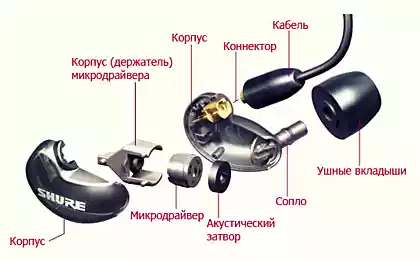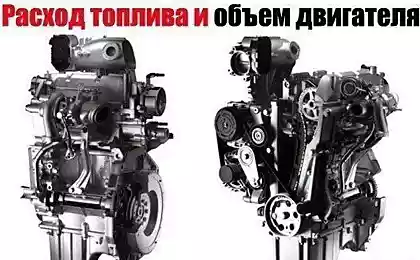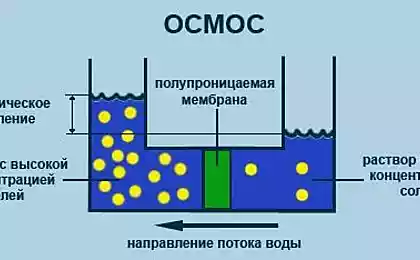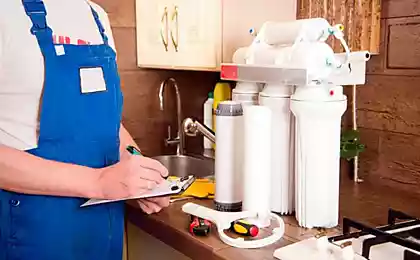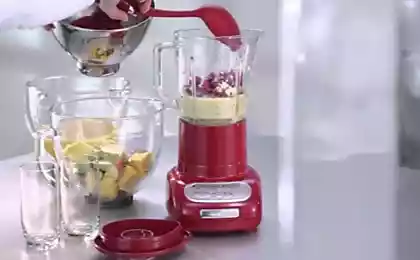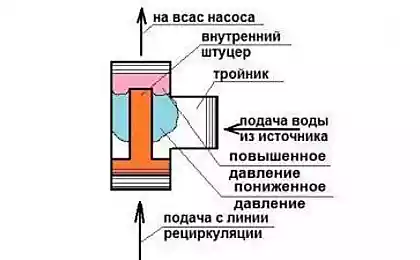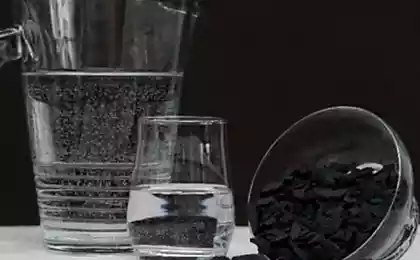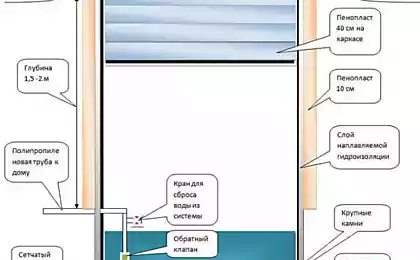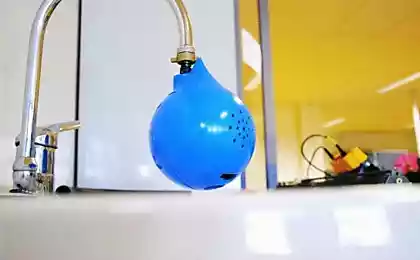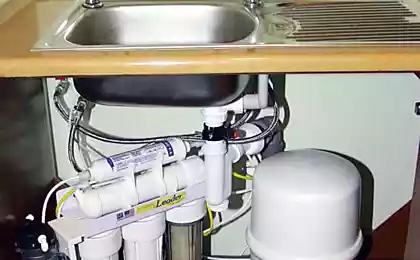531
How to save water: faucets, nozzles, aerators, and other devices
There are different ways of saving water at the household level. Some are organizational, and some are inherent in the design of plumbing. Therefore, during the selection of specific models can be made so that, over time, at least part of the cost of their purchase will pay off by reducing water consumption.

Principles of economy in Spite of the different structural solutions "economy plumbing", fundamentally there are only two ways to conserve water: recycling gray wastewater and reduce consumption without compromising the effectiveness of the use of the plumbing fixture.
Secondary use of the First principle long known in Europe, where the separation of waste common practice. Yes, and we "traders" with the Autonomous sewer sometimes use this scheme, and let the cleaned gray wastewater for irrigation of the site.
But how this can be done in an urban apartment? The answer was found long ago is to combine the washbasin and toilet cistern. Even in normal design for a "compact" such a decision is quite natural.
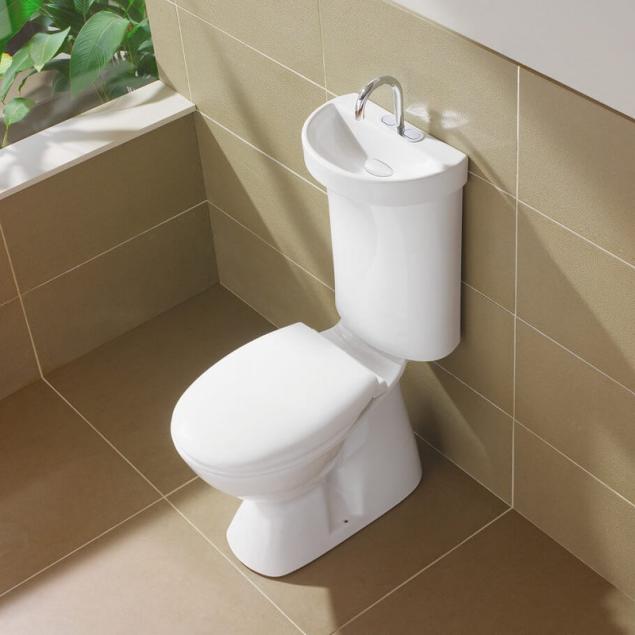
There are more "solid" sets, made of stainless steel, which have a classic toilet bowl combined with pedestal sink and toilet tank.
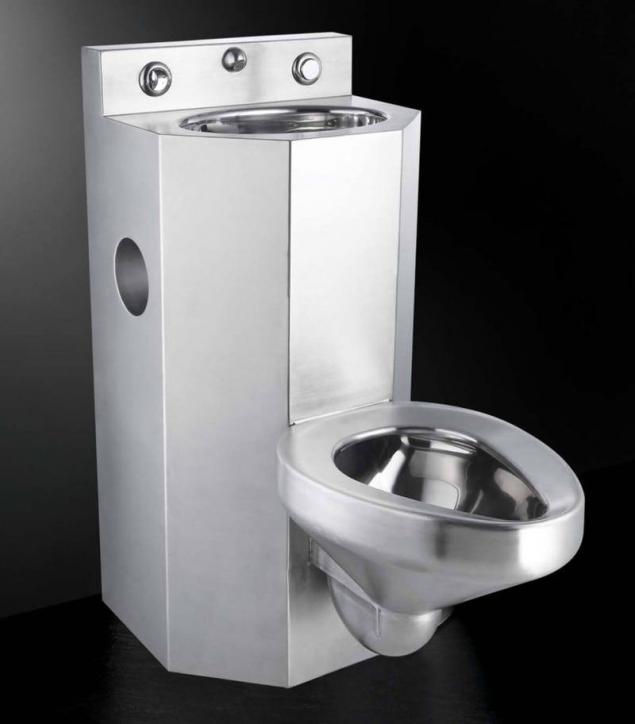
The only disadvantage of such "front-loading" models — to use the shell side is necessary to have free space. But there are asymmetric model.
For example, such a kit is a toilet bowl "shifted" at the edge of the dresser.
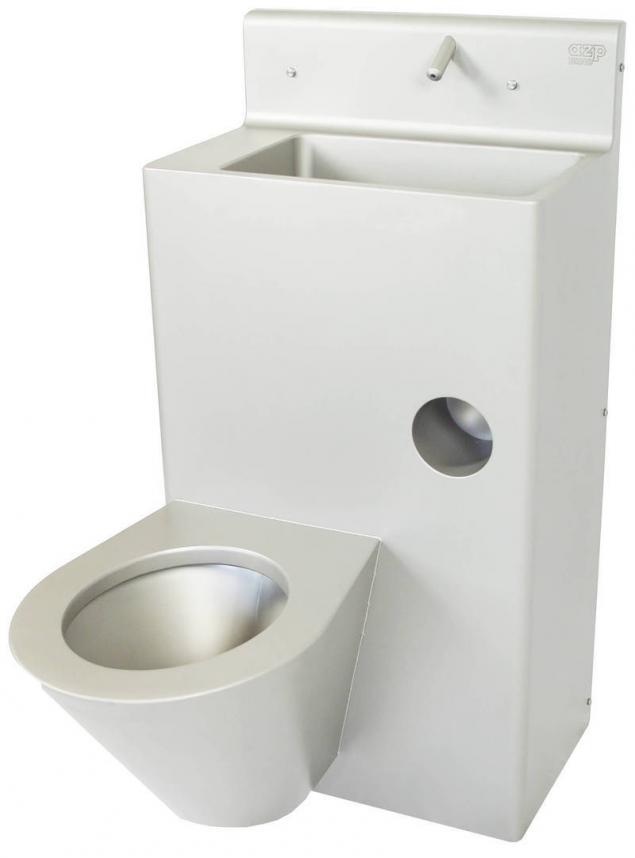
In this case the toilet "launched" at 45°.
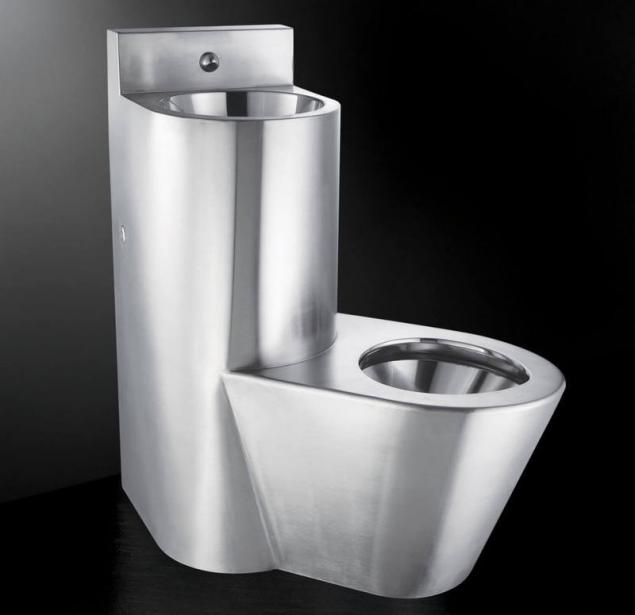
This model provided the most comfortable conditions for washing, completely freeing the approach to the sink.
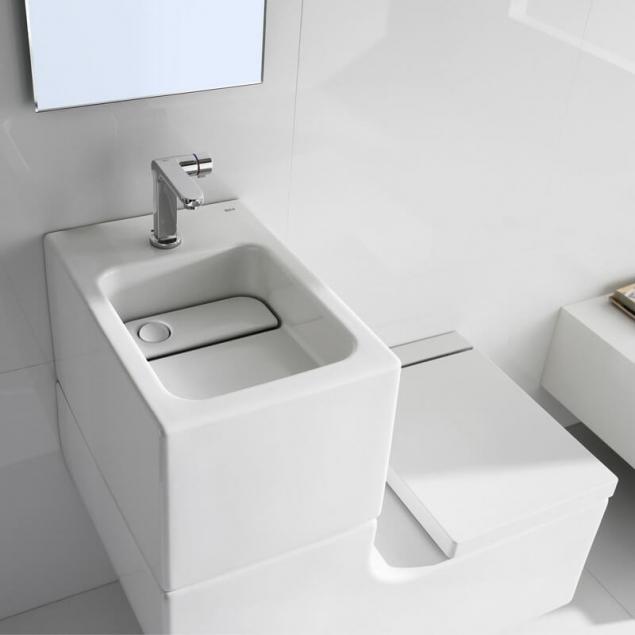
And another example of the perpendicular arrangement of the axial lines of the toilet and the sink. Here the reservoir consists of two branches: the right for clean water, left for waste. And to know when the left tank can be used, it provides a key indication.
Minimizes the cisterns are continuing the theme of toilets is to say that the development of the special shape of the bowl, allowed to reduce the consumption of water to effectively drain. No longer a rarity when a standard volume of a tank is equal to 6/3 l (the second button economical drain). Some manufacturers have gone further, for example, the model of the toilet Roca Gap Clean Rim has a tank 4/2 liter.
Economical mixers Can argue which is more economical mixer — twin valve or single lever. For example, the British believe that twin valve design gives not wasting hot water, which is more expensive than cold.
But if we talk about the overall water savings during on/off mixer, then the best are touch patterns that are triggered when approaching the hands (or other object) at a distance less than the threshold sensitivity of the sensor. Moreover, this threshold can be adjusted. A sensor and shutoff valve provides a battery.
From the simplest model of such a mixer can be a single handle temperature adjustment.

Advanced models are equipped with a built-in thermostat whose temperature is adjusted by turning a knob. In the initial position the thermostat is configured at a comfortable temperature of 38°C.

And the Acme of perfection are the mixers, the modes which are set using the touch control panel.
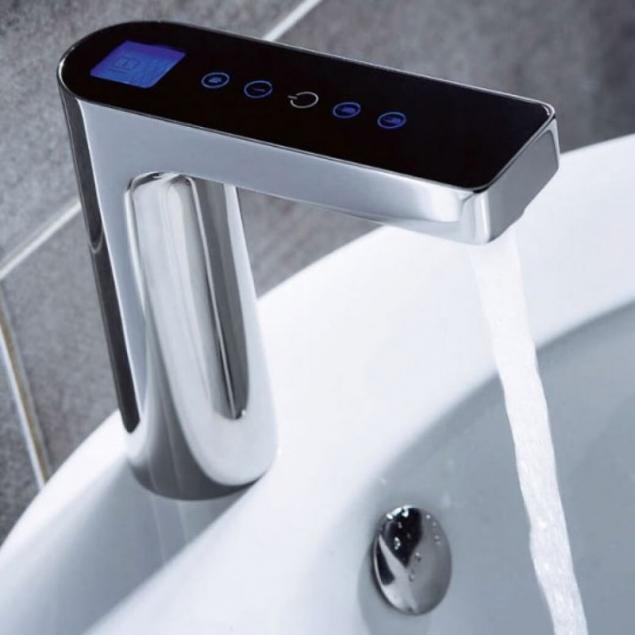
The nozzle In this Chapter we will briefly tell about the nozzles that save water.
The most difficult nozzle has a sensor like touch mixer.

And the most simple — aerators. The vast majority of mixers available in the kit with them. It could be the head with a metal mesh or plastic grid.

There are aerators with variable direction jet and the switching of operation modes, and kitchen faucets use with the aerator nozzle on a flexible hose.
The task of the aerator at low pressure to surround the stream of water. And this is possible if it is divided into streams (like shower heads) or to saturate the air. published
P. S. And remember, only by changing their consumption — together we change the world! ©
Source: www.rmnt.ru/story/fireplaces/942632.htm

Principles of economy in Spite of the different structural solutions "economy plumbing", fundamentally there are only two ways to conserve water: recycling gray wastewater and reduce consumption without compromising the effectiveness of the use of the plumbing fixture.
Secondary use of the First principle long known in Europe, where the separation of waste common practice. Yes, and we "traders" with the Autonomous sewer sometimes use this scheme, and let the cleaned gray wastewater for irrigation of the site.
But how this can be done in an urban apartment? The answer was found long ago is to combine the washbasin and toilet cistern. Even in normal design for a "compact" such a decision is quite natural.

There are more "solid" sets, made of stainless steel, which have a classic toilet bowl combined with pedestal sink and toilet tank.

The only disadvantage of such "front-loading" models — to use the shell side is necessary to have free space. But there are asymmetric model.
For example, such a kit is a toilet bowl "shifted" at the edge of the dresser.

In this case the toilet "launched" at 45°.

This model provided the most comfortable conditions for washing, completely freeing the approach to the sink.

And another example of the perpendicular arrangement of the axial lines of the toilet and the sink. Here the reservoir consists of two branches: the right for clean water, left for waste. And to know when the left tank can be used, it provides a key indication.
Minimizes the cisterns are continuing the theme of toilets is to say that the development of the special shape of the bowl, allowed to reduce the consumption of water to effectively drain. No longer a rarity when a standard volume of a tank is equal to 6/3 l (the second button economical drain). Some manufacturers have gone further, for example, the model of the toilet Roca Gap Clean Rim has a tank 4/2 liter.
Economical mixers Can argue which is more economical mixer — twin valve or single lever. For example, the British believe that twin valve design gives not wasting hot water, which is more expensive than cold.
But if we talk about the overall water savings during on/off mixer, then the best are touch patterns that are triggered when approaching the hands (or other object) at a distance less than the threshold sensitivity of the sensor. Moreover, this threshold can be adjusted. A sensor and shutoff valve provides a battery.
From the simplest model of such a mixer can be a single handle temperature adjustment.

Advanced models are equipped with a built-in thermostat whose temperature is adjusted by turning a knob. In the initial position the thermostat is configured at a comfortable temperature of 38°C.

And the Acme of perfection are the mixers, the modes which are set using the touch control panel.

The nozzle In this Chapter we will briefly tell about the nozzles that save water.
The most difficult nozzle has a sensor like touch mixer.

And the most simple — aerators. The vast majority of mixers available in the kit with them. It could be the head with a metal mesh or plastic grid.

There are aerators with variable direction jet and the switching of operation modes, and kitchen faucets use with the aerator nozzle on a flexible hose.
The task of the aerator at low pressure to surround the stream of water. And this is possible if it is divided into streams (like shower heads) or to saturate the air. published
P. S. And remember, only by changing their consumption — together we change the world! ©
Source: www.rmnt.ru/story/fireplaces/942632.htm
The power of confidence and 9 secrets of love from Adam Jackson
New electric car, the 2017 VW e-Golf – price, cost-effectiveness and EPA rating
